Year 4
The science inquiry skills and science as a human endeavour strands are described across a two-year band. In their planning, schools and teachers refer to the expectations outlined in the achievement standard and also to the content of the science understanding strand for the relevant year level to ensure that these two strands are addressed over the two-year period. The three strands of the curriculum are interrelated and their content is taught in an integrated way. The order and detail in which the content descriptions are organised into teaching and learning programs are decisions to be made by the teacher.
Incorporating the key ideas of science
Over Years 3 to 6, students develop their understanding of a range of systems operating at different time and geographic scales.
In Year 4, students broaden their understanding of classification and form and function through an exploration of the properties of natural and processed materials. They learn that forces include non-contact forces and begin to appreciate that some interactions result from phenomena that can't be seen with the naked eye. They begin to appreciate that current systems, such as Earth's surface, have characteristics that have resulted from past changes and that living things form part of systems. They understand that some systems change in predictable ways, such as through cycles. They apply their knowledge to make predictions based on interactions within systems, including those involving the actions of humans.
(source: www.australiancurriculum.edu.au)
Achievement Standard
By the end of Year 4, students apply the observable properties of materials to explain how objects and materials can be used. They describe how contact and non-contact forces affect interactions between objects. They discuss how natural processes and human activity cause changes to Earth’s surface. They describe relationships that assist the survival of living things and sequence key stages in the life cycle of a plant or animal. They identify when science is used to understand the effect of their actions.
Students follow instructions to identify investigable questions about familiar contexts and make predictions based on prior knowledge. They describe ways to conduct investigations and safely use equipment to make and record observations with accuracy. They use provided tables and column graphs to organise data and identify patterns. Students suggest explanations for observations and compare their findings with their predictions. They suggest reasons why a test was fair or not. They use formal and informal ways to communicate their observations and findings.
(source: www.australiancurriculum.edu.au)
- Plus Plan
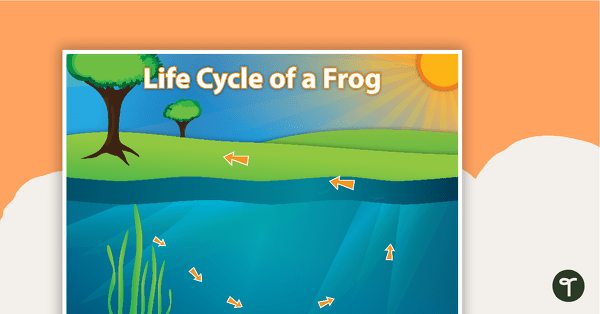
Frog Life Cycle Sort
Help your students concrete their understanding of the frog life cycle with this interactive game.
- Plus Plan
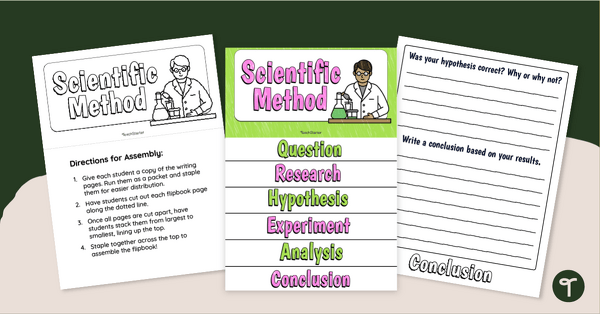
Scientific Method Flipbook Template
Create a Scientific Method Flipbook to record scientific predictions, observations, and conclusions with a printable science flip book template.
- Plus Plan
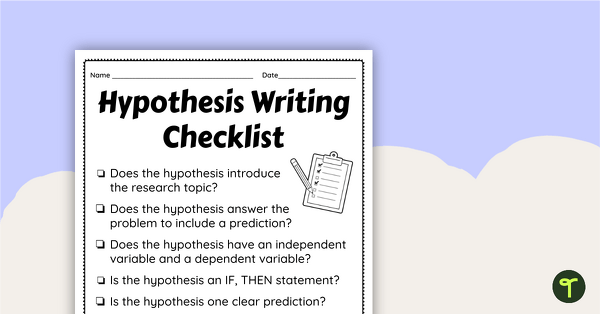
Scientific Hypothesis Writing Checklist
Use a Scientific Hypothesis Writing Checklist to help your students write clear and complete scientific hypotheses.
- Plus Plan
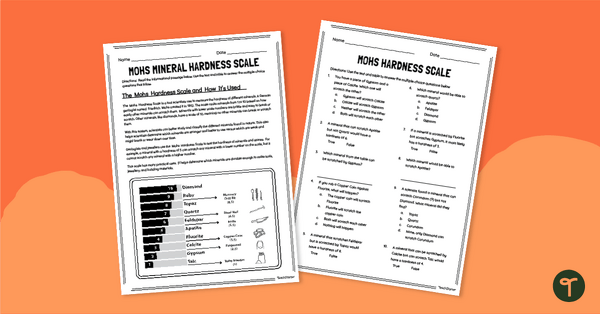
Mohs Scale of Mineral Hardness Worksheet
Use our Mohs Scale of Mineral Hardness Worksheet to help your students identify and classify minerals and gemstones.
- Plus Plan
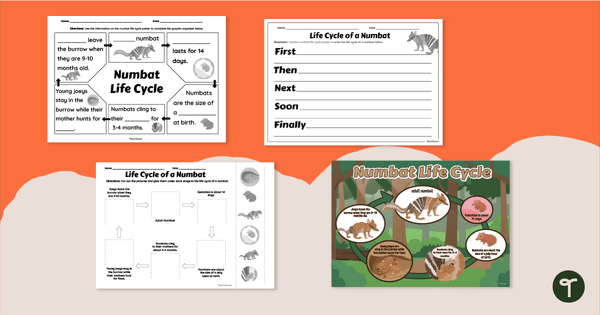
Numbat Life Cycle Poster & Worksheets
Explore the life cycle of a numbat with a printable poster and Numbat Life Cycle Worksheet Pack.
- Plus Plan

Uses of Magnets Mini-Book
Teach about everyday uses of magnets with this printable mini-book perfect for Year 4 science lessons.
- Plus Plan
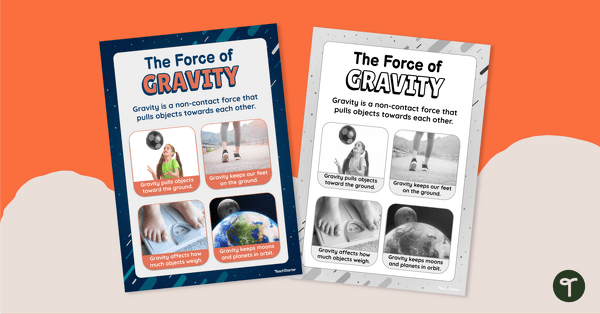
Gravity Poster
Teach students facts about gravity using this gravity poster perfect for Year 4 science lessons.
- Plus Plan
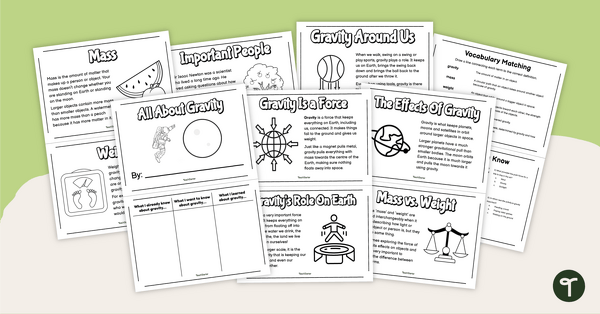
All About Gravity Mini-Book
Get students exploring gravity facts for kids with this printable mini-book perfect for Year 4 science lessons.
- Plus Plan
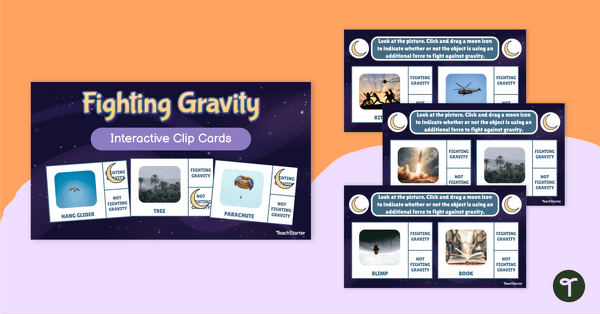
Fighting Gravity Interactive Peg Cards
Explore objects that must fight gravity to stay in their air with this set of 24 digital peg cards.
- Plus Plan
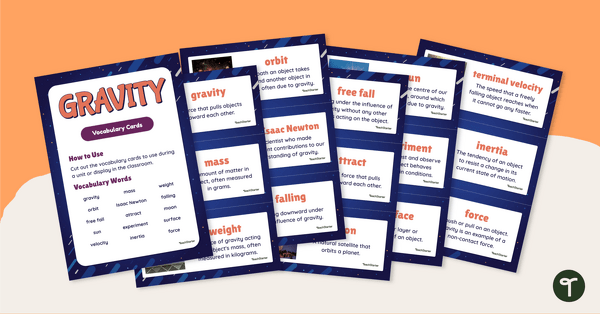
Gravity Word Wall Vocabulary Cards
Immerse your students in gravity vocabulary with this set of 15 illustrated vocabulary cards perfect for a word wall display.
- Plus Plan
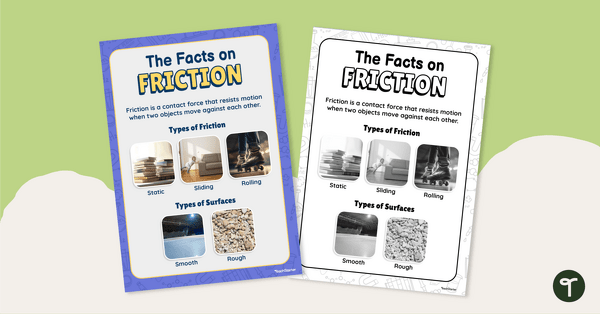
Friction Poster
Show students frictional force examples using this friction poster perfect for Year 4 science lessons.
- Plus Plan
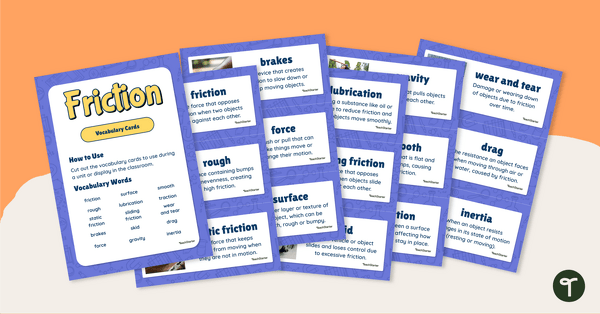
Friction Word Wall Vocabulary Cards
Immerse your students in friction vocabulary with this set of 15 illustrated vocabulary cards perfect for a word wall display.
- Plus Plan
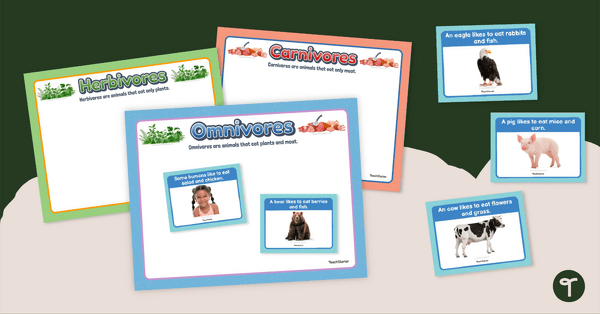
Herbivores, Carnivores, and Omnivores – Sorting Activity
Determine if animals are omnivores, carnivores, or herbivores based on their diet with this sorting activity.
- Plus Plan
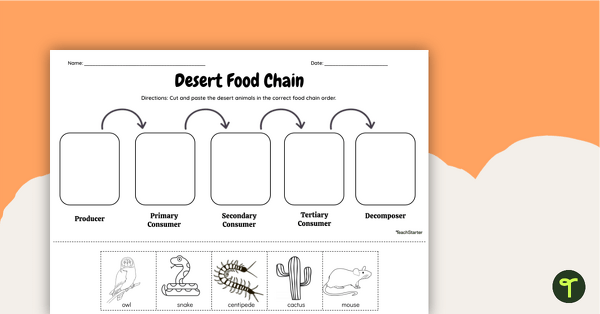
Desert Food Chain - Cut and Paste Worksheet
Create a desert food chain to show how energy flows between organisms with this cut-and-paste worksheet.
- Plus Plan
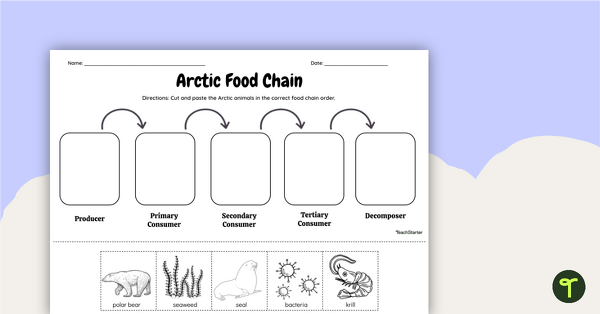
Arctic Food Chain - Cut and Paste Worksheet
Create an Arctic food chain to show how energy flows between organisms with this cut-and-paste worksheet.
- Plus Plan
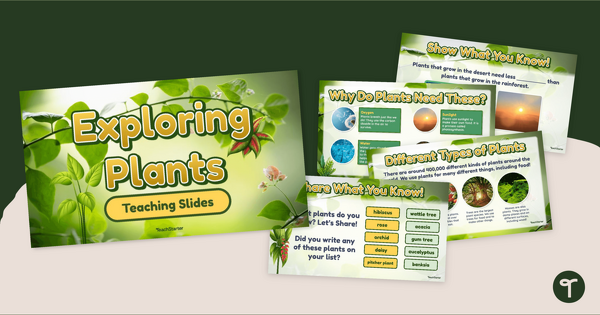
Exploring Plants PowerPoint
Explore the characteristics of plants in our environment with an interactive teaching slide presentation.
- Plus Plan
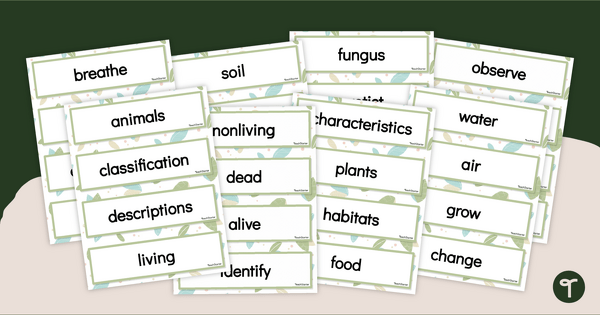
Living and Non-Living Things - Word Wall Vocabulary
Discover the world of living and nonliving things, starting with a printable vocabulary word wall.
- Plus Plan

Lab Safety Teaching Slides
Teach the important of science safety before conducting experiments with this 18-slide teaching presentation.
- Free Plan
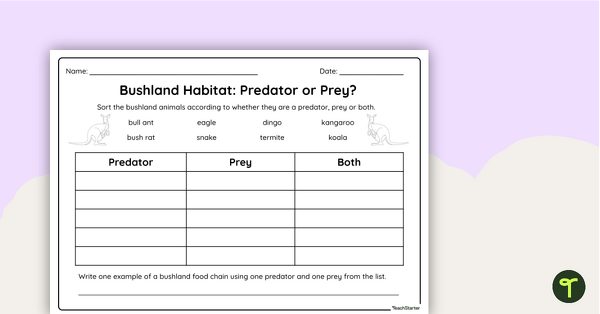
Bushland Habitat: Predator or Prey? - Worksheet
Sort animals according to whether they are classified as predators, prey, or both with this worksheet.
- Plus Plan
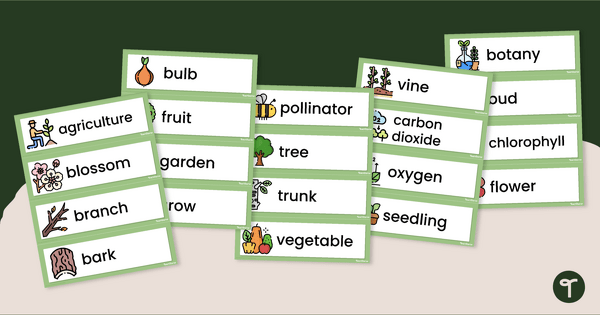
Plant Words - Illustrated Word Wall
Discover the world of plant-related vocabulary with an illustrated plant word wall display.
- Plus Plan
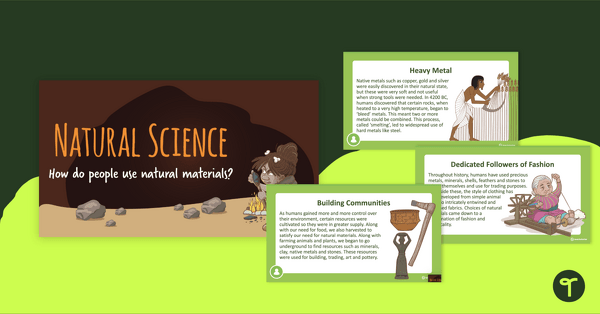
Natural Science PowerPoint - How Do People Use Natural Resources?
A teaching presentation discussing natural resources and how humans interact with them.
- Plus Plan
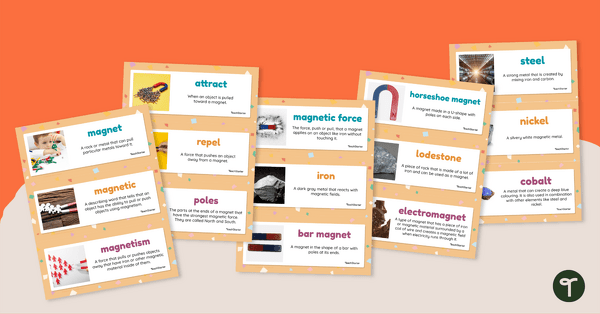
Magnetism Vocabulary Cards
Reinforce science vocabulary in your classroom with this set of word wall cards that focus on magnetism.
- Plus Plan
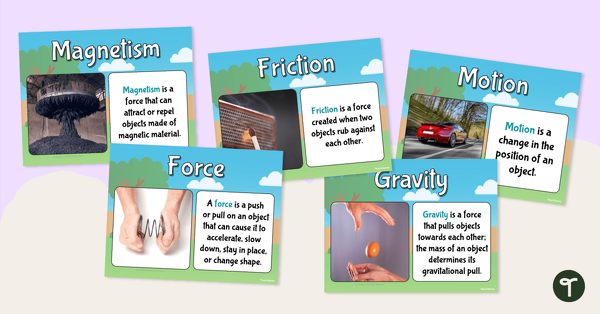
Force and Motion – Poster Pack
Display information about force and motion with this set of 12 vocabulary posters.
- Plus Plan
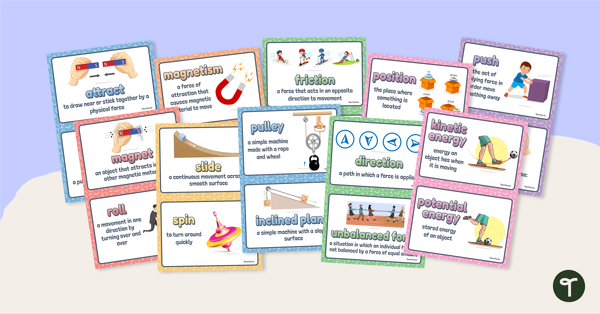
Force and Motion Vocabulary Posters
Display this set of 22 mini-posters in your classroom when learning about force and motion vocabulary.
- Plus Plan
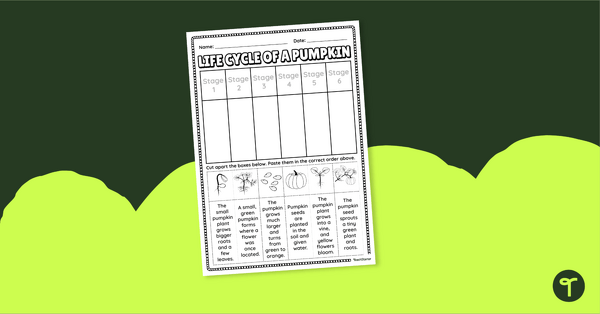
Life Cycle of a Pumpkin – Cut and Paste Worksheet
Learn about the life cycle of a pumpkin with a cut and paste sequencing worksheet.
- Plus Plan
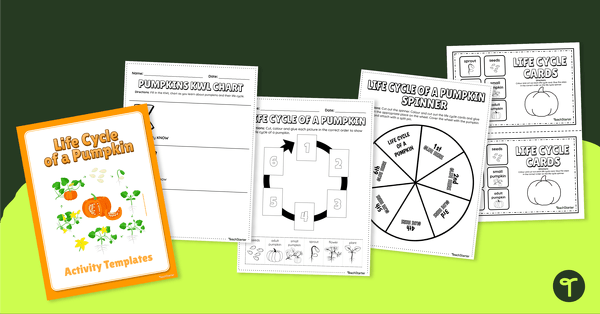
Life Cycle of a Pumpkin Activity Templates
Organise, record and display information about the life cycle of a pumpkin with these activity templates.
- Plus Plan

Refracting Telescope Poster – Diagram with Labels
A poster containing a diagram with labels showing the key parts of a refracting telescope.
- Plus Plan
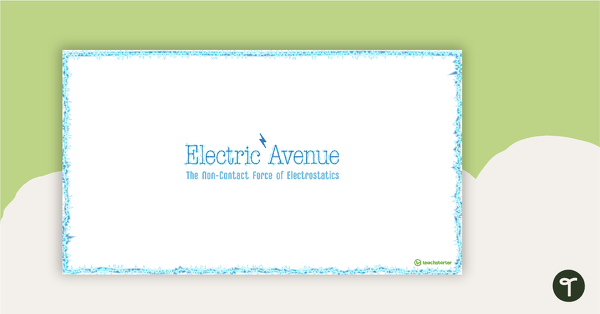
Electric Avenue - Understanding the Non-contact Force of Electrostatics PowerPoint
A teaching presentation introducing the students to the non-contact force of electrostatics.
- Plus Plan
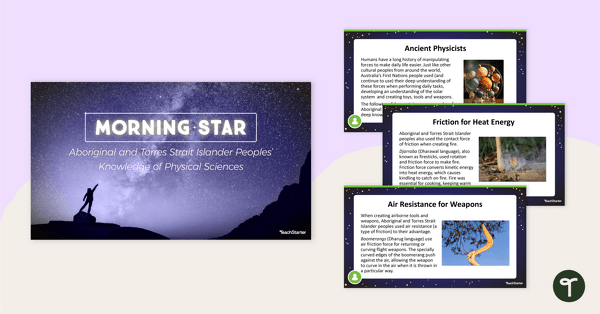
Aboriginal and Torres Strait Islander Peoples’ Knowledge of Physical Sciences – Teaching Slides
Teach your students about Aboriginal and Torres Strait Islander peoples' knowledge of forces with this comprehensive and age-appropriate teaching presentation.
- Plus Plan
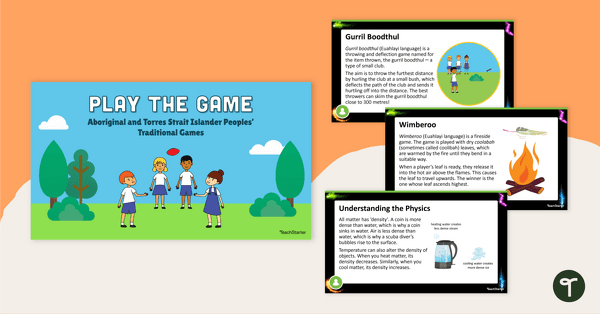
Aboriginal and Torres Strait Islander Peoples' Traditional Games – Teaching Slides
Teach your students about some traditional games from Aboriginal and Torres Strait Islander cultures with this comprehensive and age-appropriate teaching presentation.
- Plus Plan
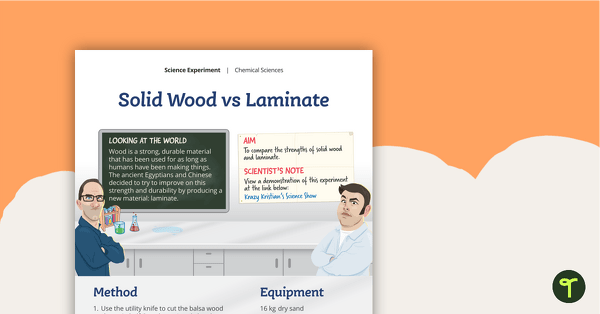
Science Experiment - Solid Wood vs Laminate
A science experiment which investigates the strengths of solid wood and laminate.
- Plus Plan
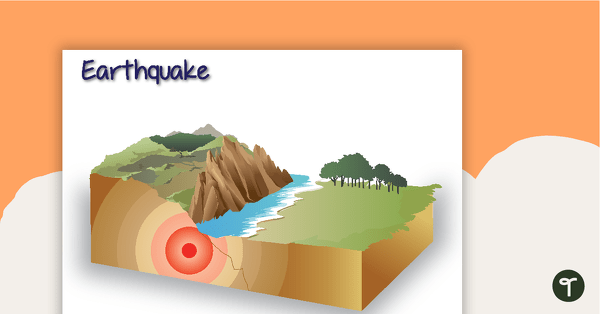
Natural Disaster Posters
Posters with pictures for eight different types of natural disasters.